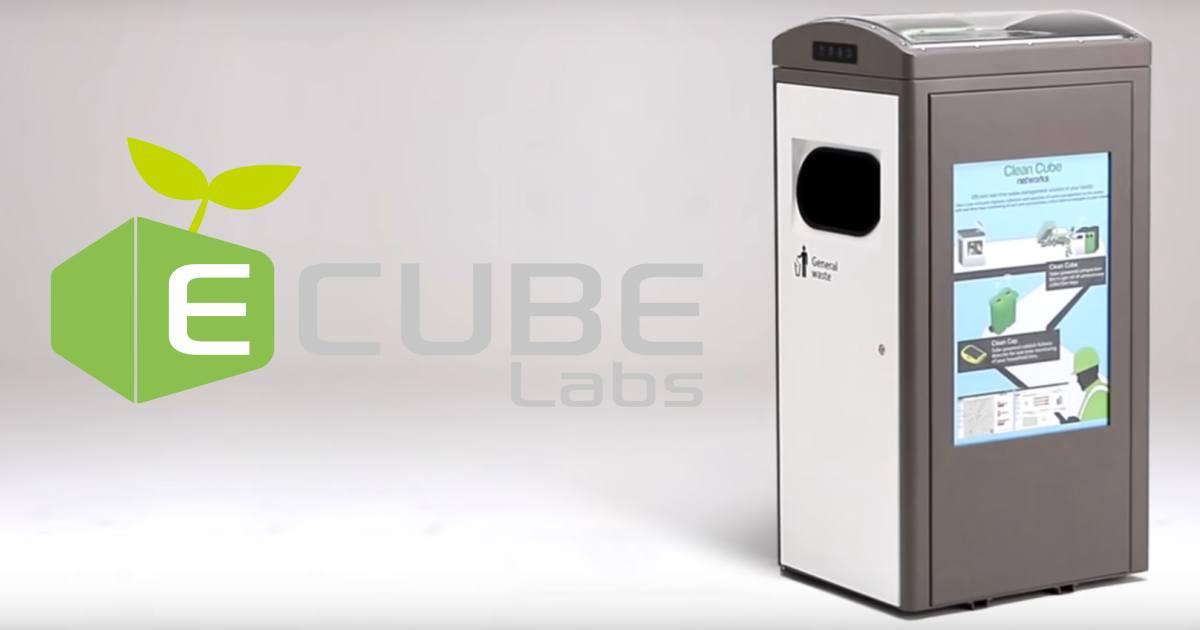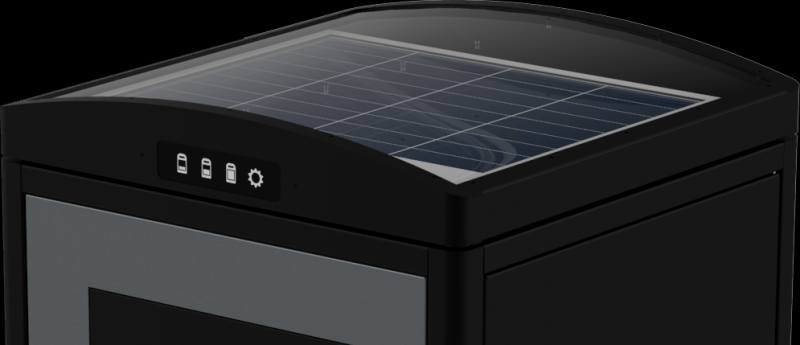
The main streets of Stirling and Lobethal in the Adelaide Hills region will see the addition of a couple solar powered bins by the end of next week.
Adelaide Hills Council is installing the CleanCube “smart” bins as part of trial in improving efficiency and reducing emissions associated with waste services.
CleanCube is a solar-powered garbage compacting bin that can hold up to 8 times more waste compared to non-compacting bins, reducing collection frequency by up to 80%. The bins Council is trialing will be housing standard 240L wheelie bins.
How CleanCube Works
Solar powered bins such as ECube Labs’ CleanCube have been around for a while now and are in use in various locations across Australia. But if you’ve never struck them before, here’s how the CleanCube works.
A solar panel of up to 60W capacity is mounted on top of the bin, which charges a battery so the CleanCube can operate at night and under unfavourable daytime weather conditions. Once fully charged, the system can operate for up to 4 weeks under such conditions.
Putting a solar panel on top of anything in a public space within the reach of idiots is just asking for trouble, so the panel is protected by a polycarbonate shield.

I recently saw another type of solar powered bin in Sydney that has been in place for a few years. I was expecting the polycarbonate shield to be covered in scratch graffiti and to see evidence of attempts to smash it, but it didn’t look too worse for wear (but perhaps the shield has been replaced since installation).
Anyhow, as garbage builds in the CleanCube, its sensors continually monitor levels and once it reaches the required level, the compaction unit kicks into action; exerting up to 720 kilograms of force (kgf). I was envisioning wheelie bins bulging and splitting at the sides using such force, but CleanCube does state “up to”. Safety sensors detect if someone’s hands are in the bin at the time and the compaction cycle is stopped.
When the bin is approaching full, it will send a notification to Council that the bin will soon require emptying. Other alerts are sent for various situations, such as in the case of fire. In that situation, the CleanCube will also attempt to put it out using compaction.
Council will be able to monitor fill level remotely and view other information in real time such as battery capacity, a detailed profile and collection efficiency statistics.
“The result is fewer collections, fewer trucks on our roads, and less carbon emissions attributed to waste in our district,” says Council.
As well as bins, solar power is increasingly play a role in other aspects of waste collection and management. For example, elsewhere in the Adelaide region an electric garbage and recycling collection truck went into service last month. Some of the energy required to charge the truck will be offset by a 36kW solar power system at the depot installed for the purpose.

 RSS - Posts
RSS - Posts



We had Solar garbage bins in Port Stephens.Total crap hard to empty. That much force in a bin with half full milkshakes and dog poo bags etc not good. Glad council got ride of them. I was the garbo that empty’s them